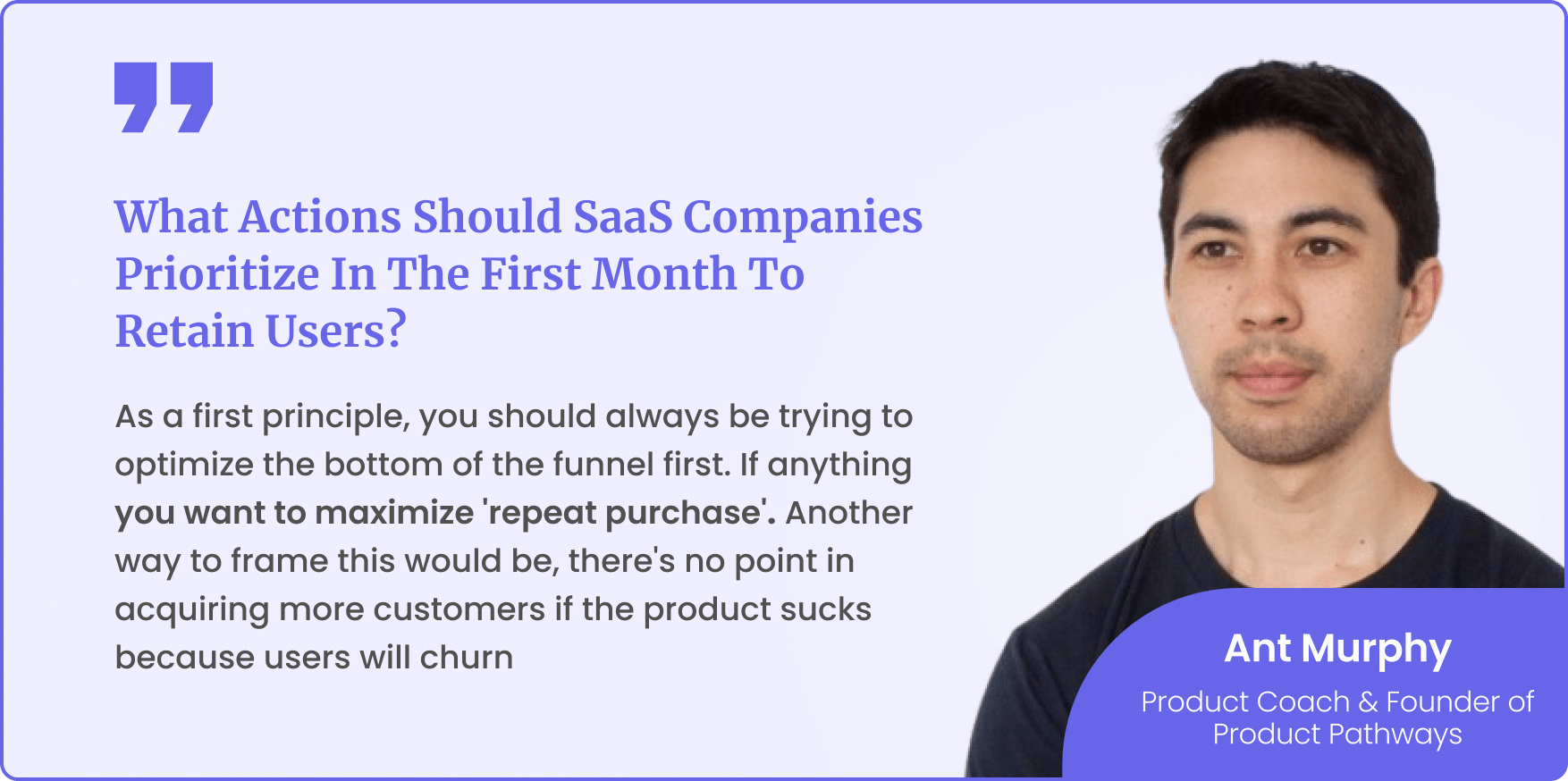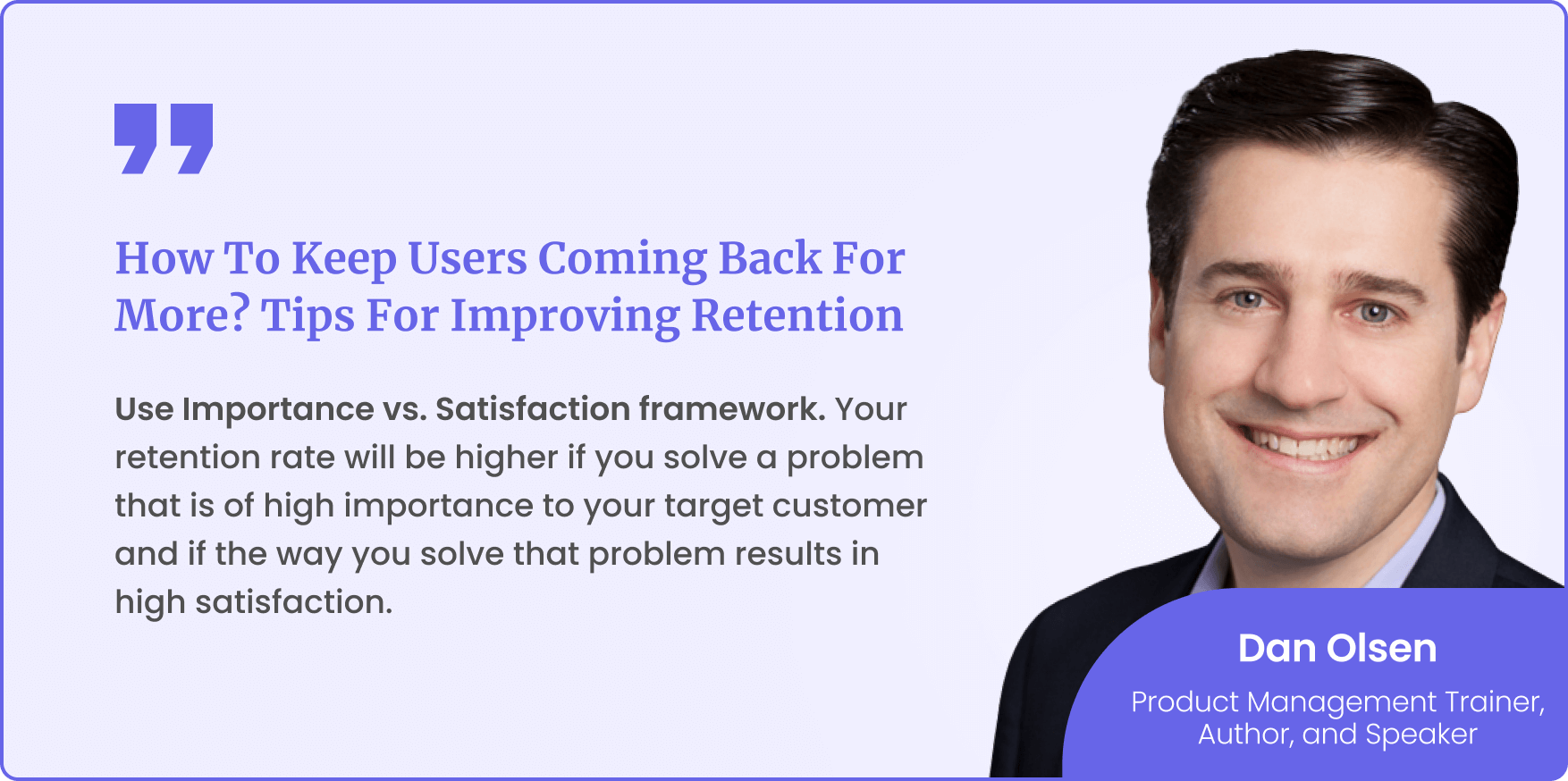SaaS Product Metrics
Benchmark Report 2025
Compare your performance on top 6 product metrics benchmarks from 547 SaaS companies across 7 industries
↑ Get the full PDF copy of the 2025 SaaS Benchmarks Report.
Why You Should Read This Report

Make Better, Data-Driven
Decisions
Benchmark Your Performance Against Industry Standards
Optimize Your Metrics to Maximize Your Revenue Growth
Metrics Analyzed
Averages from 547 companies analyzed
By Industry

By PLG vs SLG Approach

By Company Size

Where Is This Data From?
- New User Activation Dashboard
- Product Usage Dashboard
- Core Feature Engagement Dashboard
- Trend analysis
- NPS dashboard
Companies Analyzed by Industry

Companies Analyzed by
Product-Led vs Sales-Led Strategy

Report Summary
Average Activation Rate
Average
activation rate
Companies
B2B SaaS
Median
activation rate
🔍 What is User Activation?
Activation is the moment in your users’ journey when the user experiences the value of your product for the first time.
User activation rate measures the percentage of new users who complete a specific action that demonstrates the initial value of your product.
🤔 Why is User Activation Important?
User activation is one of the most important SaaS metrics for determining long-term revenue and success, and yet it’s often not measured – perhaps because the activation point is different for each product (and sometimes there may be several different activation points in one product for different personas!).
A 25% increase in user activation brings about a 34% increase in MRR in a year (Source: Fairmarkit) – which is the highest of all the “Pirate Metrics”. This shows how important this often-overlooked metric is for your bottom line.
Activation has the biggest impact on MRR in a 12 month period:

⚙️ Methodology
Get the full Report
For more data, in-depth analysis & full expert insights!
By Industry







By Company Size

Mid-sized companies might struggle more with activation as they navigate the complexities of scaling, whereas the smallest and largest companies show better performance, likely due to their ability to focus intensely on user needs.
And larger companies have more resources to invest in effective marketing, customer onboarding, and user engagement strategies.
By PLG vs SLG

How to improve your User Activation Rate?
Now that we’ve discussed what a good activation rate is – it’s time to look at some actionable tips on how to improve it. If you want to improve your user activation, you should:

Track User Activation without code!
User activation dashboard with activation rate, time to activation, and activation conversion funnel done-for-you
- See the % new signups that activate
- Identify bottlenecks in the activation funnel & areas for improvement
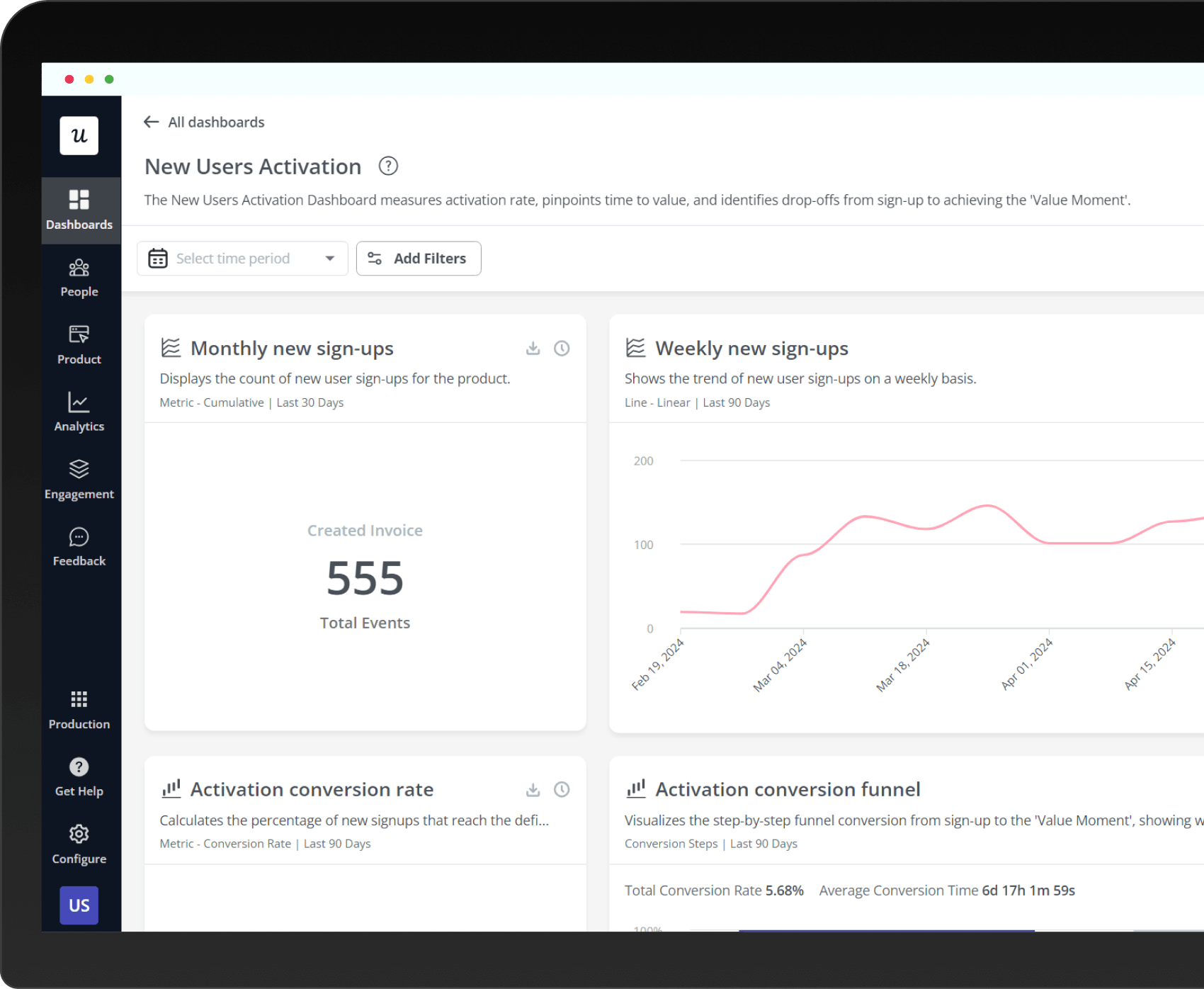
Some Conclusions to take away…
Time to Value (Activation)
23 min
Average
Time to value
Companies
B2B SaaS
54 min
Average
Time to value
🔍 What is Time to Value (Activation)?
It’s the time it takes the user to get value out of the product – i.e. a measure of how quickly the product can deliver its promise to the users.
🤔 Why It's Important?
Imagine being excited to play a new board game with your friends. But the instructions are long, complicated, and the game itself has many pieces that take forever to set up. The motivation to play is now declining rapidly, right
That’s why minimizing Time to Value is important!
And it’s not just about how quick your tool loads or the shortest 1 step product tour you could possibly make. It still has to be effective, but efficient!
⚙️ Methodology
We analyzed the same 62 companies as in our activation rate study to provide a detailed view of how long it typically takes for users to reach their first value moment after starting to use the products. The data was taken from Userpilot’s user activation dashboard again.
By Industry
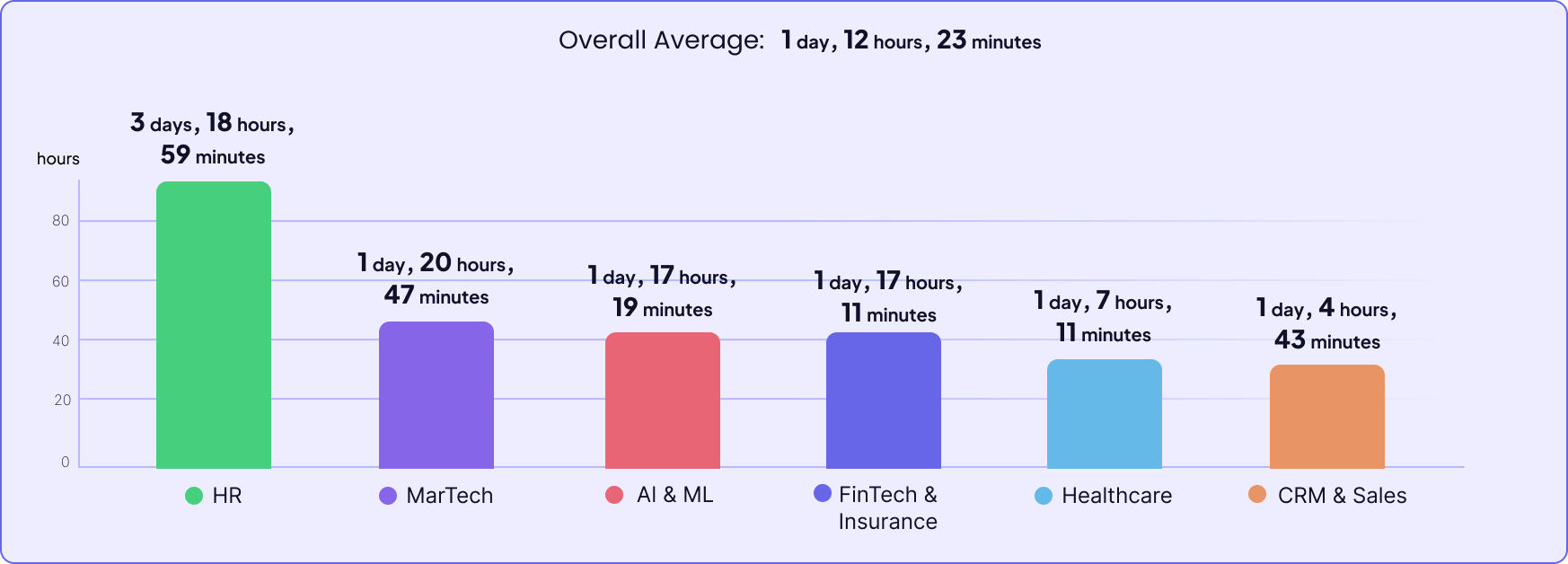






By Company Size

There’s no direct correlation between company size and time to value – in fact, the time-to-value is shortest in both the smallest – and the largest companies.
This might mean though that the smallest and the largest companies are able to dedicate more resources to onboarding – while the “messy middle” companies in the fast-paced growth stage might be the ones dropping the ball on it.
By PLG vs SLG

Get the full Report
For more data, in-depth analysis & full expert insights!
How to minimize TTV
To minimize time to value:

Want Step By Step Guidance To Shorten Your TTV?

Some Conclusions to take away…
Onboarding Checklist Completion Rate
Average
Checklist Completion Rate
Companies
B2B SaaS
Median
Checklist Completion Rate
🔍 What is an Onboarding Checklist?
It’s a tool used during the onboarding process to ensure that new users are guided through the essential features or steps of using a product or service.
🤔 Why It's Important?
It makes it easier for users to find the next step and ensure that they don’t drop off before hitting their activation point.
⚙️ Methodology
By Industry








By Company Size

By PLG vs SLG

Why build a user onboarding checklist?
You should build user onboarding checklists to:
- Minimize confusion
- Guide your users through the onboarding flow
- Give them a structured roadmap to ensure they don’t skip any important steps or fail to discover core features.
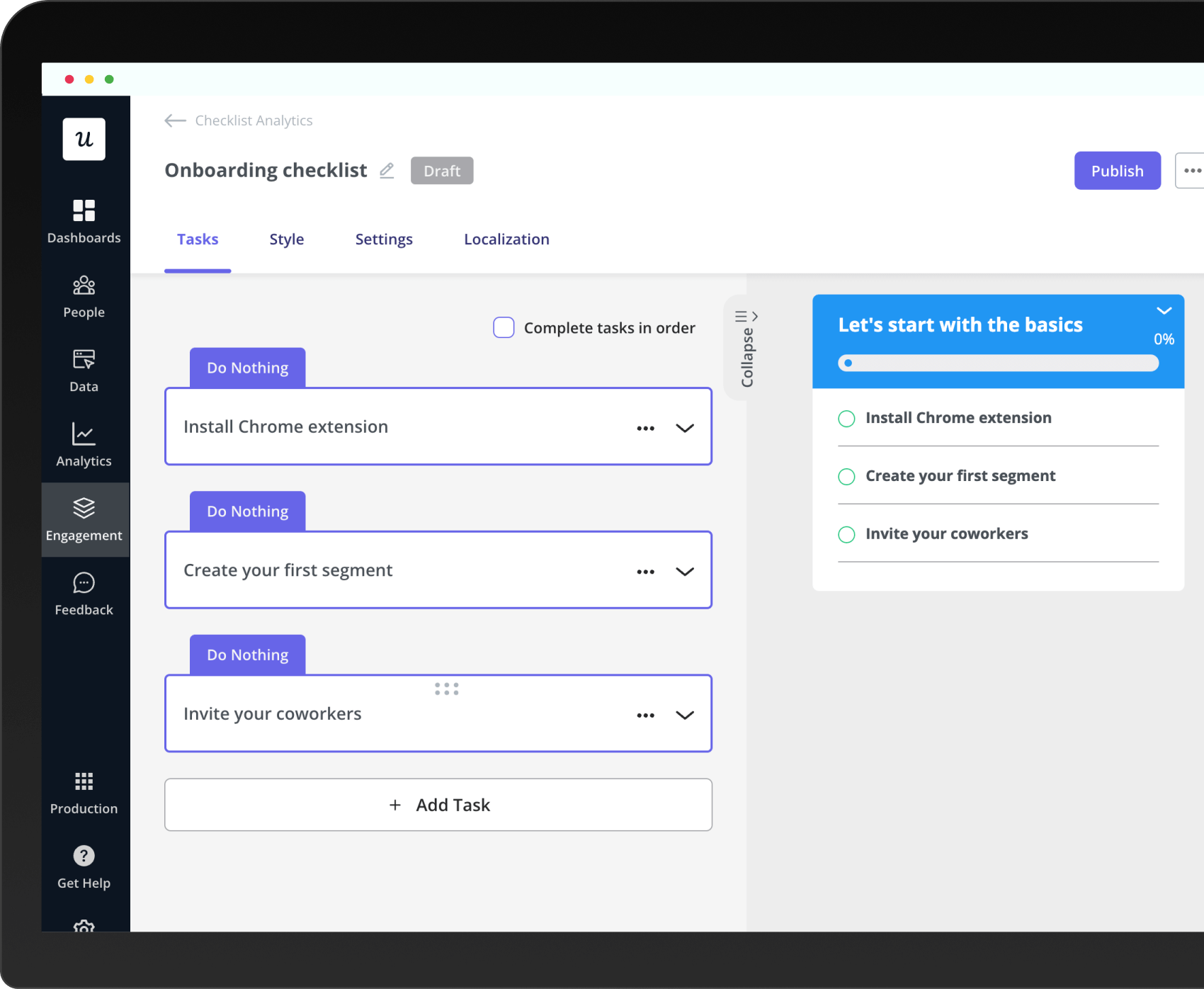
Some Conclusions to take away…
Core Feature Adoption Rate
Average
Core Feature Adoption Rate
Companies
B2B SaaS
Median
Core Feature Adoption Rate
🔍 What is Core Feature Adoption Rate?
Core feature adoption measures the percentage of users that have adopted the product’s key feature in a specific time period.
🤔 Why It's Important?
By increasing core feature adoption, you can maximize the value users get from your product and strengthen customer satisfaction and loyalty.
⚙️ Methodology
By Industry







By Company Size

Get the full Report
For more data, in-depth analysis & full expert insights!
By PLG vs SLG

How to increase the core feature adoption rate?
To boost core feature adoption:
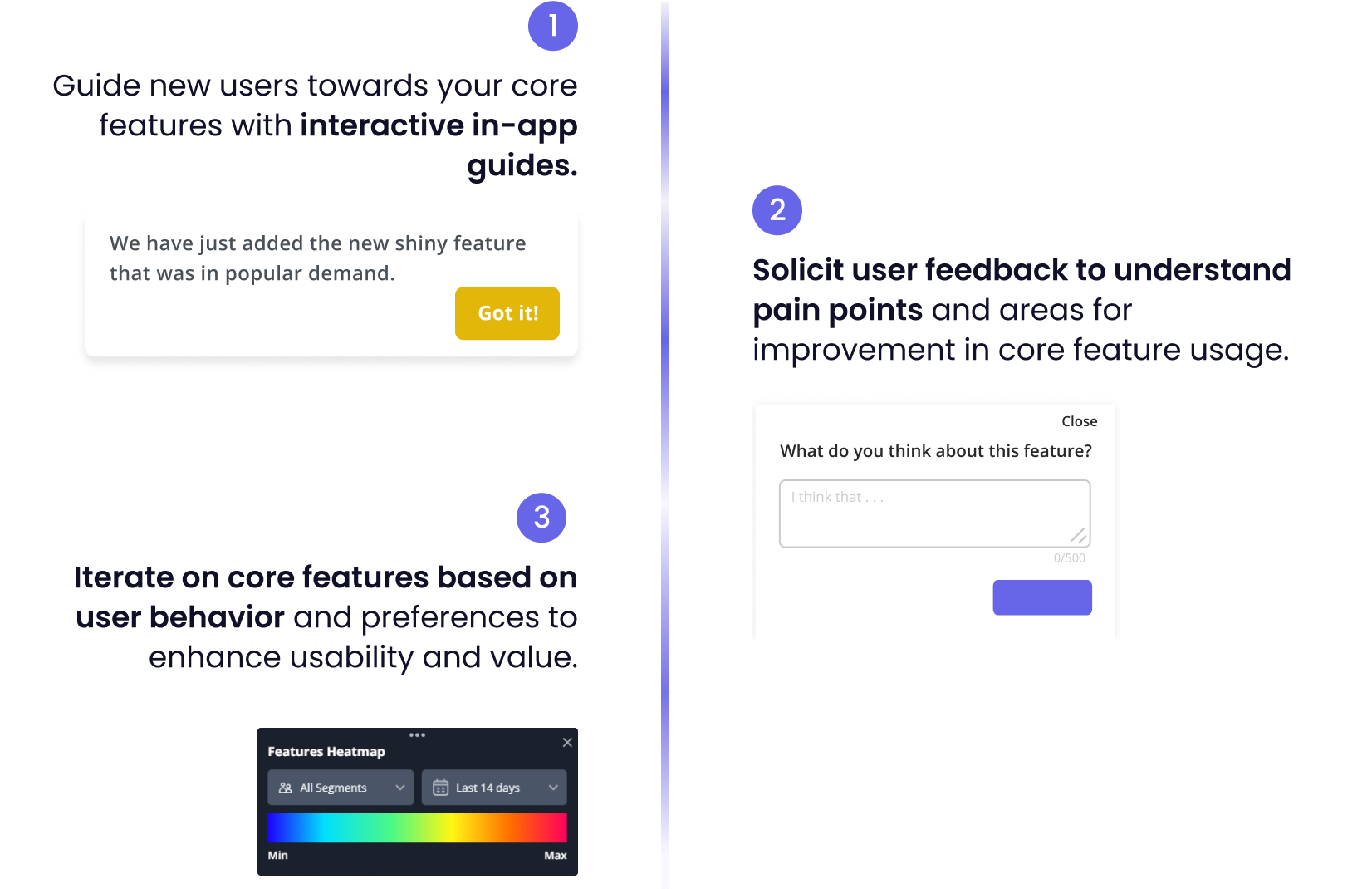
Wanna discover strategies to increase core feature adoption
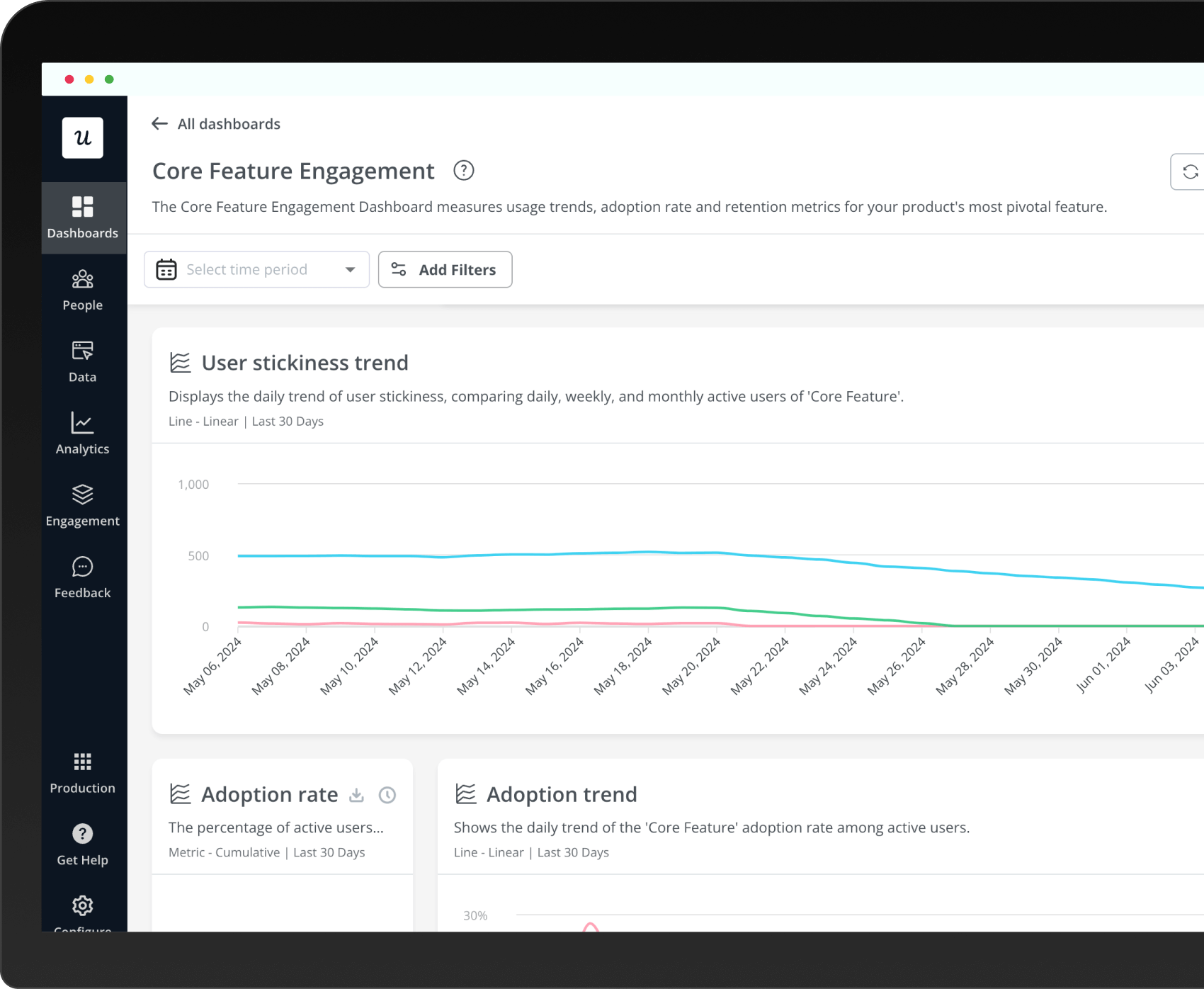
Some Conclusions to take away…
Month 1 Retention Rate
Average
Retention rate
Companies
B2B SaaS
Median
Retention rate
🔍 What is Month 1 Retention Rate?
🤔 Why It's Important?
A high month 1 retention leads to higher long-term retention and customer lifetime value.
⚙️ Methodology
We analyzed 83 companies to determine the average Month 1 retention rate, using our User Retantion Dashboard for this purpose. This dashboard measures retention over daily, weekly, and monthly intervals for all users and new sign-ups.
By Industry







By Company Size

Overall, the trend shows that as companies grow in size, the complexities of scaling customer engagement and maintaining the initial level of customer satisfaction might lead to slightly lower retention rates.
Get the full Report
For more data, in-depth analysis & full expert insights!
By PLG vs SLG

We see a slight advantage in retention for PLG companies.
One big factor here could be how PLG companies handle support. Our research from last year showed that 37% of customers would actually prefer cleaning a toilet over having to talk to support teams. This shows that the self-service options offered by PLG models are really hitting the mark.
How to improve month 1 retention rate?
Now let’s see what you can do to get similar results. To improve month 1 retention rate, focus on:

Increase user retention and drive users to become brand advocates
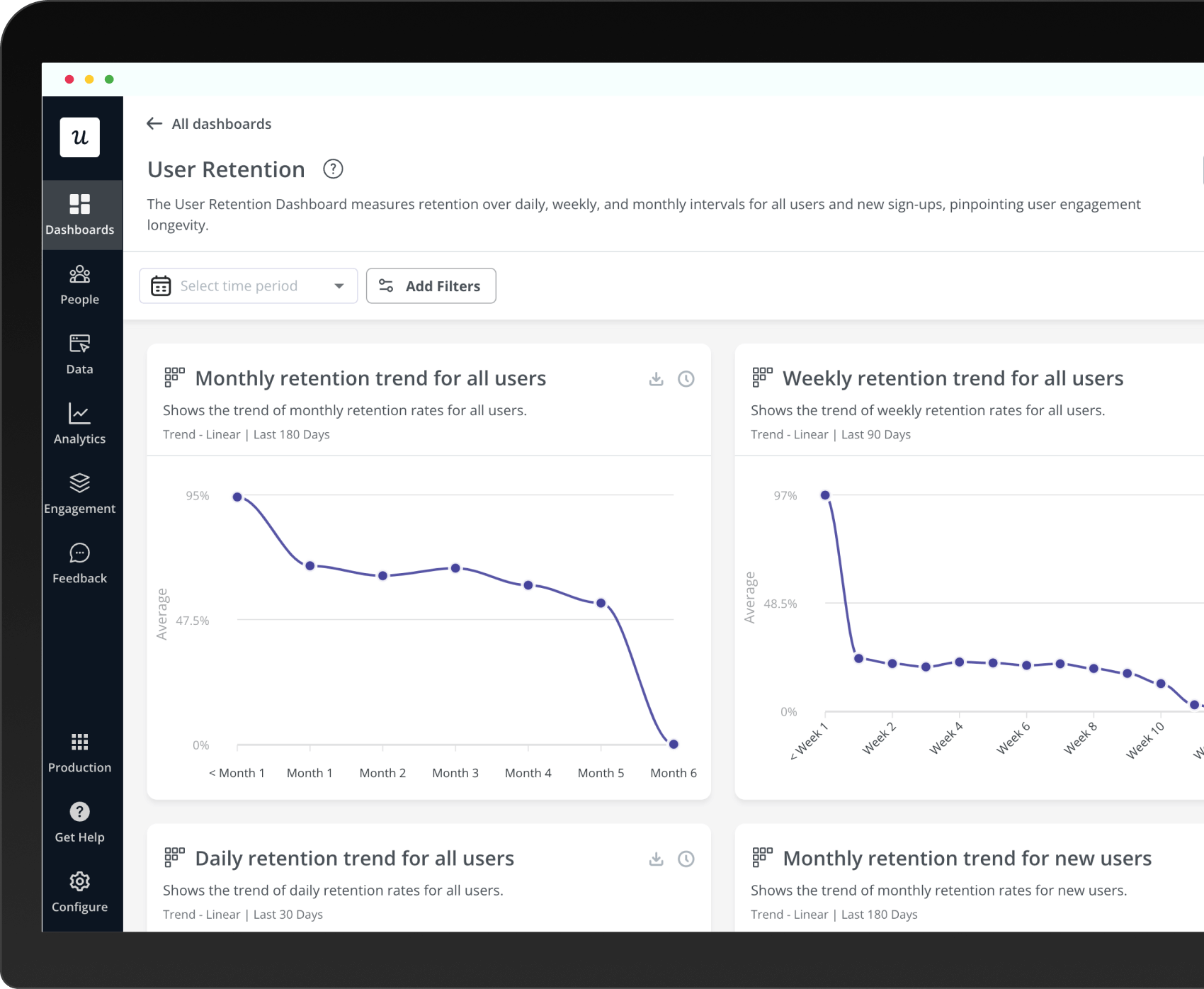
Some Conclusions to take away…
Average NPS
Average
NPS
Companies
B2B SaaS
Median
NPS
🔍 What is NPS?
It’s a metric that measures customer satisfaction and loyalty by asking customers how likely they are to recommend the product or service to others.
🤔 Why It's Important?
- It helps you track customer satisfaction and loyalty.
- It helps you uncover customer pain points and areas of improvement.
- It helps you gain valuable insights and optimize the customer journey.
⚙️ Methodology
By Industry








By Company Size

Get the full Report
For more data, in-depth analysis & full expert insights!
By PLG vs SLG
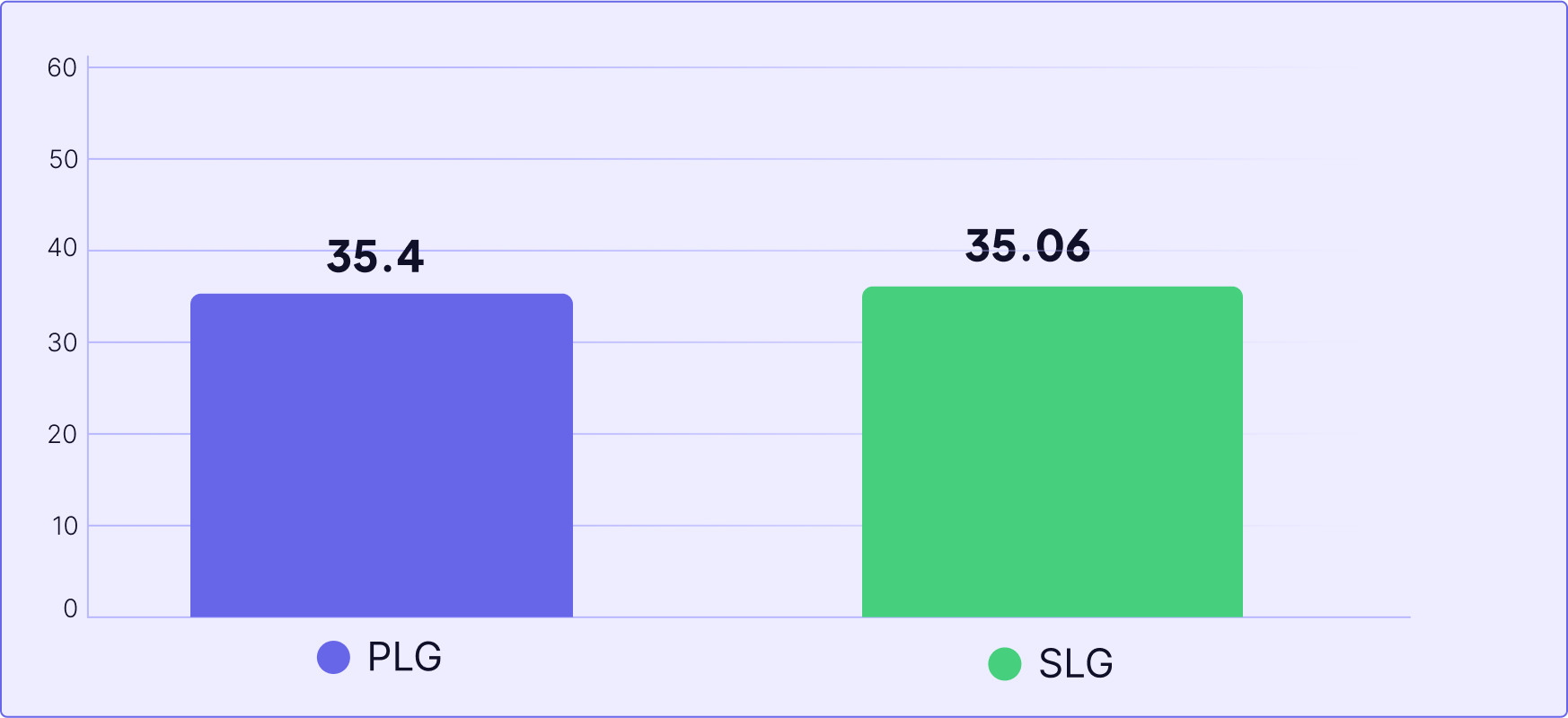
How to increase average NPS?
Now let’s see what you can do to get similar results. To improve month 1 retention rate, focus on:
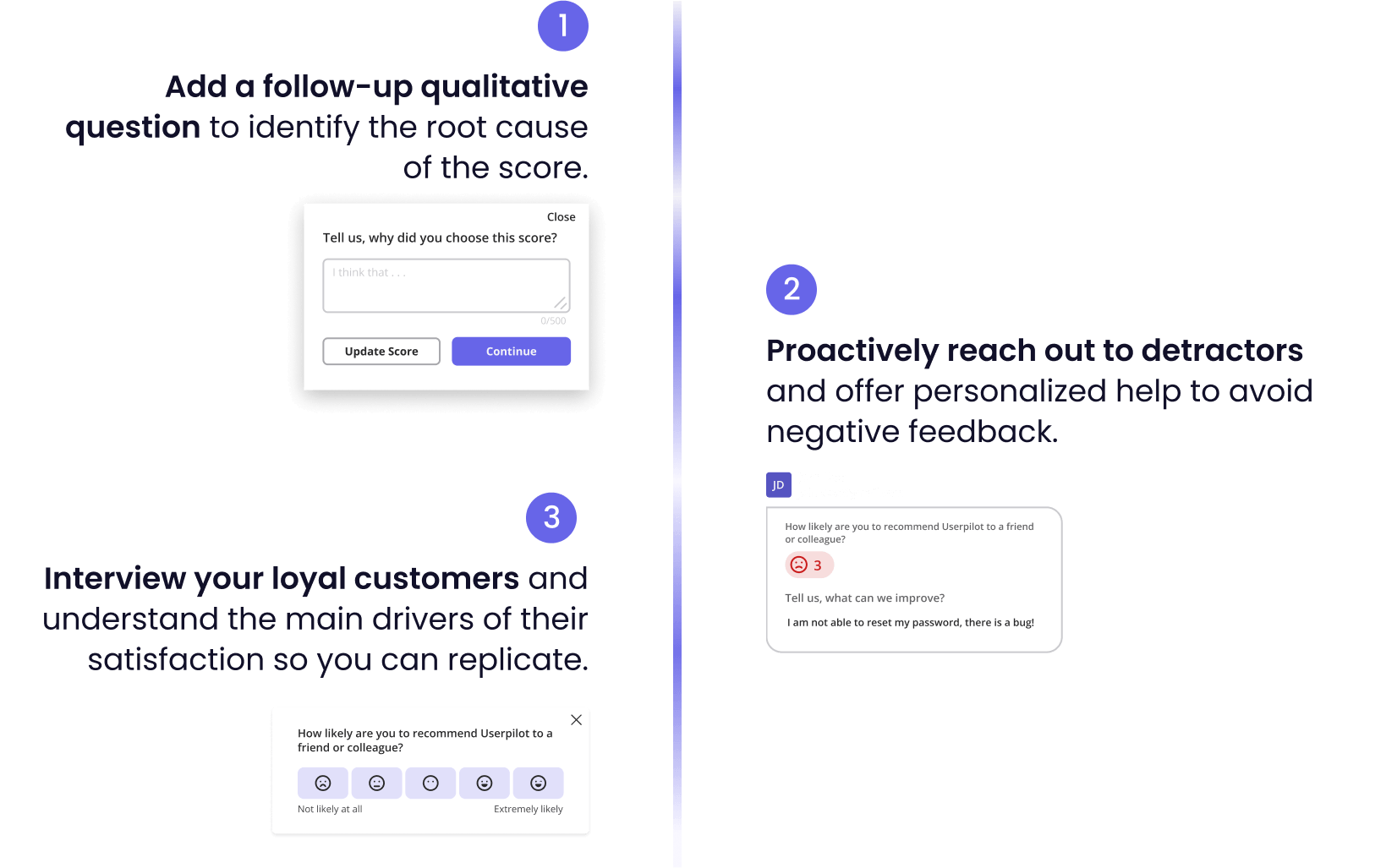
Want to collect user feedback, and track how customers are interacting with your features code-free?

Some Conclusions to take away…
Tailor Your Strategy for Unique Success
While it’s important to understand industry benchmarks and where you stand relative to them, remember that every business—and every product—is unique. Chasing the numbers of other companies without considering your specific context might not lead you in the right direction for your own success. It’s not just about keeping up; it’s about defining what success looks like for your specific situation.
To truly optimize and tailor your metrics for peak performance, we are excited to offer a free onboarding and UX audit. This personalized audit is designed to help you understand your product’s unique strengths and areas for improvement, ensuring that the strategies you implement are the best fit for your specific needs.
Share Now and Win!
Enjoyed reading the report?
Share your favorite insights on social media, mention @Userpilot, and get a surprise gift from us. It’s our way of showing appreciation for your engagement and feedback.




